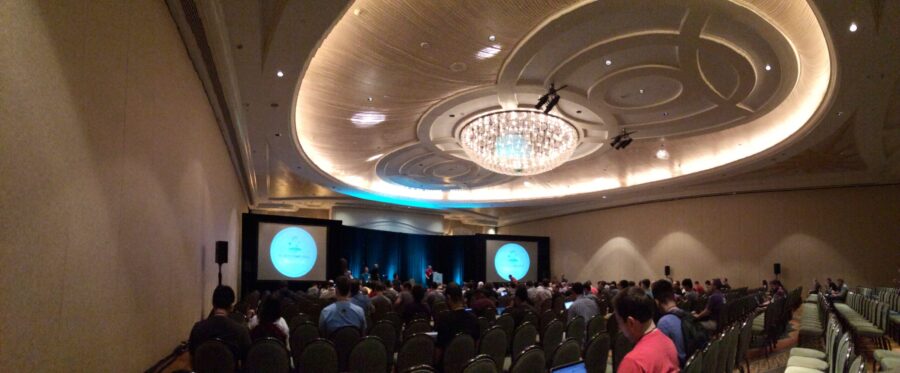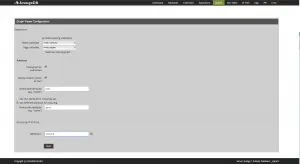ArangoDB 1.4.6: Enhancements & Bug Fixes Released
This version is deprecated. Download the new version of ArangoDB
A new release of ArangoDB is available for download.
- issue #736: AQL function to parse collection and key from document handle
- added fm.rescan() method for Foxx-Manager
- fixed issue #734: foxx cookie and route problem
- added method `fm.configJson` for arangosh
- include `startupPath` in result of API `/_api/foxx/config`
ArangoDB 1.4.5 Release: Enhancements & Bug Fixes
This version is deprecated. Download the new version of ArangoDB
A new release of ArangoDB is available for download
- fixed issue #726: Alternate Windows Install Method
- fixed issue #716: dpkg -P doesn’t remove everything
- fixed bugs in description of HTTP API `_api/index`
- fixed issue #732: Rest API GET revision number
- added missing documentation for several methods in HTTP API `/_api/edge/…`
- fixed typos in description of HTTP API `_api/document`
- defer evaluation of AQL subqueries and logical operators (lazy evaluation)
- Updated font in WebFrontend, it now contains a version that renders properly on windows
- generally allow function return values as call parameters to AQL functions
- fixed potential deadlock in global context method execution
- added override file “arangod.conf.local” (and co)
ArangoDB’s Web Interface Screencast | Explore Management Tools
With ArangoDB we ship a nice and useful web interface for administration.
However we have not yet told you in a video what you can do with this interface.
This screencast will give a comprehensive overview over the features offered in the interface.
ArangoDB Xmas Edition 1.4.4: Release Notes and Updates
This version is deprecated. Download the new version of ArangoDB
We have released the bug-fix version 1.4.4 of ArangoDB. While this version only contains minor fixes, we have switched to a new build system for Windows. We are now using Visual Studio 2013 and CMAKE to build ArangoDB under Windows. This also includes a new installer (Nullsoft Scriptable Install System). ArangoDB can now be installed as a service under Windows.
Unix The configuration is now called “arangod.conf” instead of “arangod-uid.conf” in order to avoid confusion.
Windows The default installation directory is “c:Program FilesArangoDB-1.x.y”. During the installation process you may change this. In the following description we will assume that ArangoDB has been installed in the location ROOTDIR. You have to be careful when choosing an installation directory. You need either write permission to this directoy or you need to modify the config file for the server process. In the latter case the database directory and the Foxx directory should must be writable by the user.
Installating for a single user Select a different directory during installation. For example “C:/Users//arangodb” or “C:/ArangoDB”. Installating for multiple users Keep the default directory. After the installation edit the file “ROOTDIR/etc/arangodb/arangod.conf”. Adjust the “directory” and “app-path” so that these paths point into your home directory.
[database] directory = @HOMEDRIVE@/@HOMEPATH@/arangodb/databases [javascript] app-path = @HOMEDRIVE@/@HOMEPATH@/arangodb/appsCreate the directories for each user that wants to use ArangoDB.
Installating as Service Keep the default directory. After the installation open a command line as administrator (search for “cmd” and right click “run as administrator”)
cmd> arangod –install-service INFO: adding service ‘ArangoDB – the multi-purpose database’ (internal ‘ArangoDB’) INFO: added service with command line ‘”C:Program Files (x86)ArangoDB 1.4.4binarangod.exe” –start-service’Open the service manager and start ArangoDB. In order to enable logging edit the file “/etc/arangodb/arangod.conf” and uncomment the file option.
[log] file = @ROOTDIR@/var/log/arangodb/arangod.logArangoDB at RubyConf 2013: Insights and Presentations
RubyConf is a yearly conference in the USA with people coming from all over the world to discuss about Ruby, Rails and related topics. Every year a different city hosts this conference – this year the conference took place in sunny Miami Beach. This year Dirk Breuer – the other main developer behind Guacamole – and I went there to learn from the speakers talking about a wide range of topics. Apart from the great talks there was a lot of opportunity to talk to Rubyists from entirely different areas like social networks or banking backend systems, the problems they face and the solutions they found for them. Of course there were a lot of people catching a sight of our ArangoDB shirts and coming towards us to ask about ArangoDB and the Ruby support. The question ranged from basic questions (“What is ArangoDB?”) to more involved questions about AQL for example. As always we were happy to answer all of them!

Main hall of RubyConf 2013
All videos from the conference are online now. The excellent keynote by Katie on the second day is not only interesting to Rubyists, but everyone enthusiastic about programming and especially teaching it. If you understand German and want to get more tips about which talks to watch, download episode 26 of Geekstammtisch where we discussed RubyConf.
ArangoDB Goes to Barcelona | NoSQL Matters 2013 Event
The ArangoDB team traveled to Barcelona for the “NoSQL matters” – weekend. Day one was packed with a lot of NoSQL-trainings and Jan introduced the NoSQL landscape by explaining how to model your data in a non-relational world. Following the wish of many participants Jan had to repeat the morning session about the new and exciting possibilities of NoSQL in the afternoon.
After an inspiring key-note by Nathan Marz, three tracks full of NoSQL, BigData and Searching explained the latest trends.
Lucas talked about ArangoDB in general, Foxx and the advantages of multi-models. He explained “why relations — especially properties graphs — matter even in a NoSQL database” by Sarahs Mei’s example of social networks.
After his talk, we had a lot of interesting and inspiring discussions at the ArangoDB booth in the entry hall.
NoSQL matters was a great experience for us, which gave the ArangoDB team the opportunity to meet a lot of interesting people to exchange and to develop new ideas.
Graph Visualization Techniques | ArangoDB: Insights & Tutorials
Using ArangoDB as your graph database?
you now have the opportunity to visualize your data graphically, using the “Graphs” tab in the admin interface.
In this post i will explain you how to do this:
Step 1) Configure the Interface
At first you have to configure the interface to display exactly the data you desire.
For the dataset you have two options:
- Select one vertex and one edge collection directly
- Select the graph by name created using the graphs api
- Manage your graphs
Then the interface offers you several advanced options:
- Decide if the graph is directed (only outbound edges are followed) or undirected (all edges are followed). By default we treat your graphs as undirected
- Define if you want to start at a random vertex in the graph. By default we will do that.
- Then you can define which of your attributes should be used as the label on the verticies. By default we will use the _key for this.
- Now lets bring in some colour. You can either use the same attribute for colouring as for labeling, but you can also use a different one
- Finally you can define a grouping of new nodes. This is useful to speed up the performance of the interface and to increase the usability. You can define a priority list of attributes here, which is elaborated from top to bottom: All vertices having the first attribute defined are grouped by its value. All other nodes are grouped by the second attribute if present etc.

Graph Visualization Screencast | ArangoDB: Advanced Techniques
In the latest version of ArangoDB (1.4) we have introduced a new tab in the Admin Interface: Graphs.
You can use this tab to view and modify your graphs stored in ArangoDB.
In this screencast you will get a short introduction on how to use the new system.
ArangoDB Insert Performance Measurement: Techniques & Insights
Measuring ArangoDB insert performance
ArangoDB offers a few APIs to insert documents. First, there is an HTTP API for bulk document imports. This API was already covered in another post. In general, the bulk import API should always be used when the task is to create many documents into a collection at once, as fast as possible. This works well if the documents are known in advance, e.g. when importing data from a file.
ArangoDB 1.4: Introducing Multiple Databases Feature
This version is deprecated. Download the new version of ArangoDB
ArangoDB 1.4 provides support for multiple databases, a feature often requested by our users.
Motivation In the old days, ArangoDB provided the option to create multiple collections, but all collections were created on the same level. As there was no hierarchy of collections, there was a chance of having a collection name clash when using one ArangoDB server for multiple applications. For example, running multiple applications inside the same ArangoDB server did not work if all applications created their own
users collections. Workarounds, such as prefixing collection names, were required to make older ArangoDB versions play nicely with multiple applications. With ArangoDB 1.4, multiple databases are supported natively. Workarounds such as prefixing collection names with application names, can go away now.
(more…)Get the latest tutorials,
blog posts and news:
Thanks for subscribing! Please check your email for further instructions.
 Skip to content
Skip to content 
